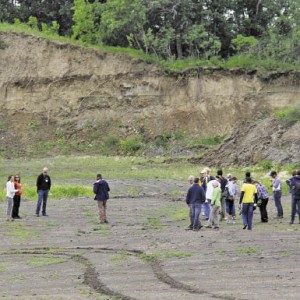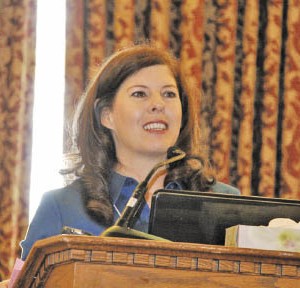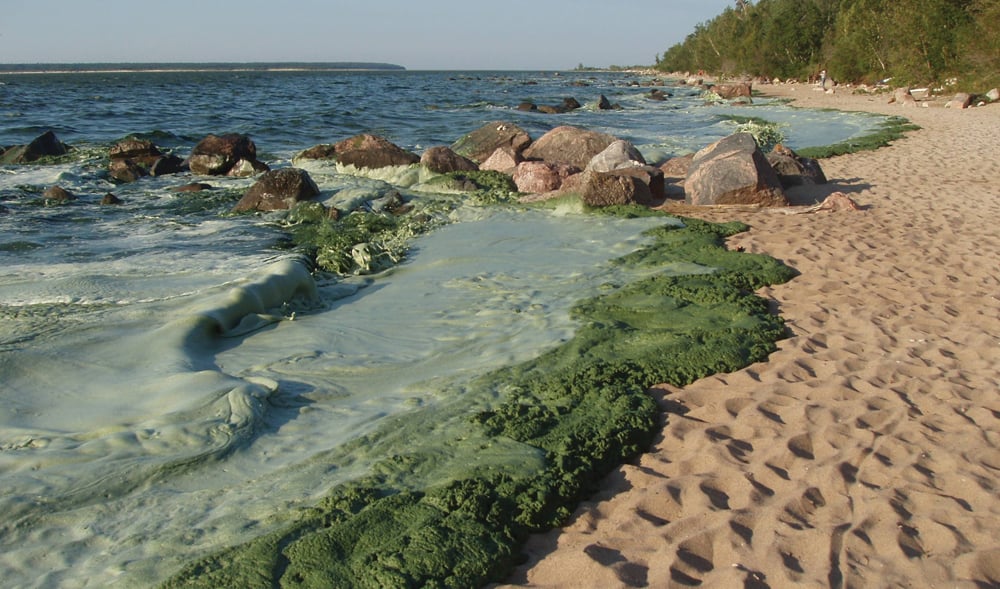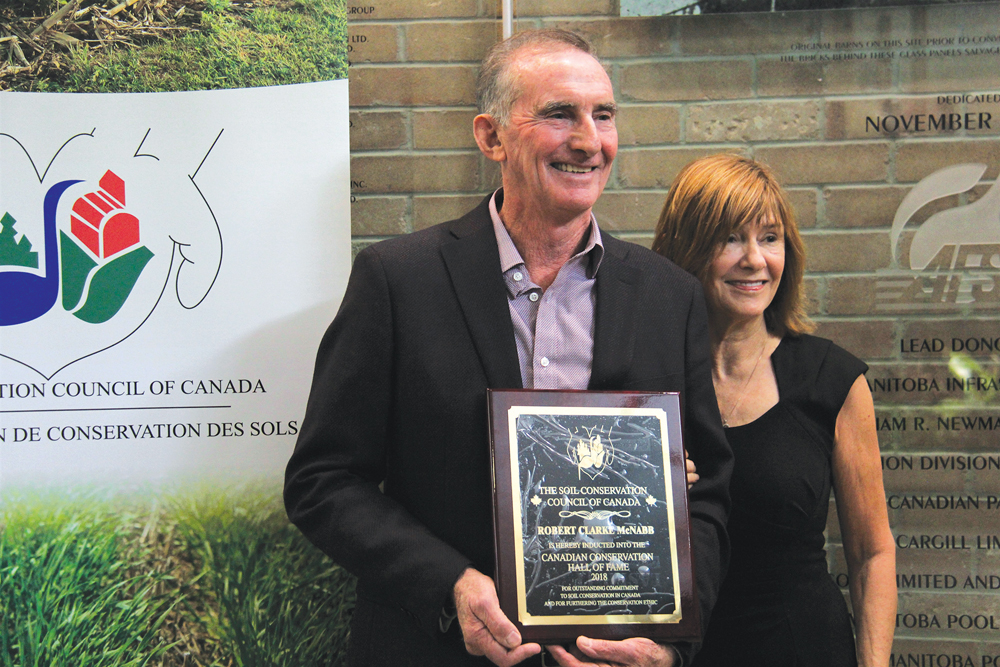Dale and Caroline Steppler’s farm on the Manitoba Escarpment was shaped by glaciers, but today the challenge is keeping nutrients from running down to Lake Winnipeg
In an abandoned shale pit a busload of muddied-shoed soil scientists from across Canada and beyond peer back millions of years into the geological history of this part of the Manitoba Escarpment west of Miami.
Marine dinosaur fossils are routinely discovered nearby in the bentonite clay formed from prehistoric volcanic ash. They once swam in the Western Interior Seaway that split North America in two.
Today’s landscape was shaped more recently — thousands of years ago rather than millions — by expanding and receding glaciers, followed 13,000 years ago by glacial Lake Agassiz.
But the focus during this segment of the field trip is on the South Tobacco Creek Watershed, one of the most studied in the country, and on finding better ways to manage soil and water on steep-sloping fields. It’s hoped the findings can be applied across the escarpment to improve the water quality entering the Red River and ultimately Lake Winnipeg, where excessive amounts of nitrogen, and especially phosphorus, are causing huge algae blooms.
The scientists in this group are among the 270 attending tours and joint meetings of the Canadian Society of Soil Science, Manitoba Soil Science Society, and Canadian Society of Agricultural and Forest Meteorology in Winnipeg July 22-25.
The tour travels a few miles southwest to Dale and Caroline Steppler’s farm near the top of the escarpment and the headwaters of the watershed. Mud prevents the group from seeing a reservoir built to capture run-off from pens holding about 100 head of cattle over the winter. The water, and the nutrients it holds, irrigates the Stepplers’ pasture — ending up where they can boost grass production, instead of ending up in Lake Winnipeg.
It demonstrates the value of mitigating nutrient loading on a whole-farm basis, said Don Flaten, professor of soil science at the University of Manitoba and conference chair.
The reservoir alone cut the nutrients leaving the farm by 35 per cent, said Flaten. Overall nutrient losses have been reduced by 50 per cent thanks to other so-called ‘Best Management Practices,’ including soil testing and applying the required amount of nutrients, as well as by small retention dams that hold back part of the annual run-off.
“A lot of these little things add up,” Flaten said.
Similar work is underway in England, added Phil Haygarth, a soil and water science expert from the Environment Centre at Lancaster University.
“It’s naive to manage the catchment watershed at the expense of productivity and the livelihood of the farm,” he said. “It’s actually about food production and a sustainable environment. And that’s the challenge — bringing it all together.”
Researchers will conduct further studies at Steppler Farm to assess the impact of winter bale feeding cattle on the fields rather than keeping them in pens, Flaten said. They also will assess the impact of spreading cattle manure on the fields.
Farmers want to do what’s best for the environment, but it has to be affordable, said Les McEwan, a local farmer and chair of the Deerwood Soil and Water Management Association. The irrigation system installed at the Steppler farm to use the run-off collected from the cattle pens cost more than $50,000, which makes the nutrients collected from the cattle pens very expensive.
Society wants a sustainable environment, but it also wants cheap food, Flaten said later in an interview.
Read Also
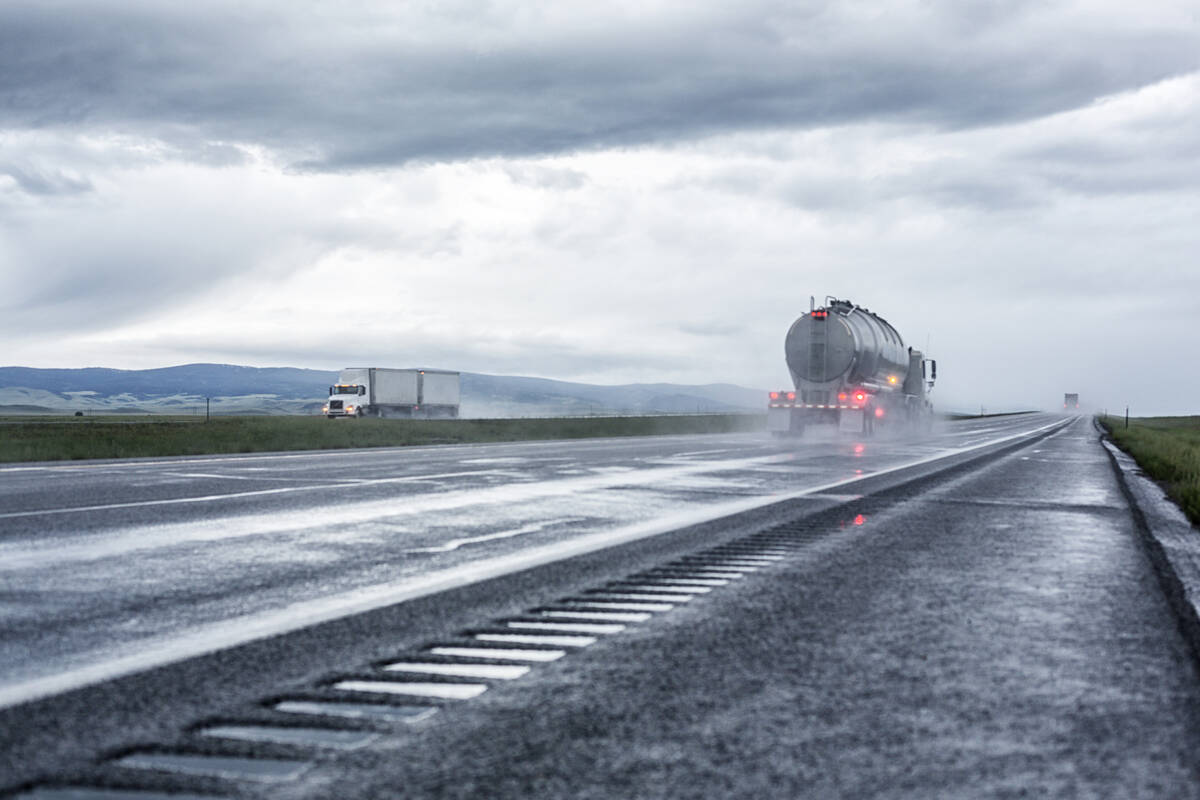
Province pledges funds to CentrePort Canada
The Manitoba government has pledged $450,000 towards projects at inland port CentrePort Canada.
“The human race tends not to change until something really hurts,” he said.
“What I tell my students is, ‘In the long run, the sun is going to go supernova and we’re all going to be dead so if you want ideal sustainability, forget about it. Let’s focus on those steps to improved sustainability and it’s a lot more optimistic scenario. Perfect sustainability is a huge challenge, improvement in sustainability is maybe something more realistic.’”
In general, Manitoba farmers are actually doing a good job applying the right amount of nutrients to replace what their crops use, said Flaten. That’s in sharp contrast to Idaho where farmers are applying 20 million kilograms more nitrogen from fertilizer and manure a year than their crops can use, USDA research scientist April Leytem later told the conference.
Much of that nitrogen is coming from dairy farms. The U.S. Environmental Protection Agency is suing five dairy farmers in Washington for nutrient pollution, and some Idaho dairymen worry they could be next, said Leytem.
There’s a lot more to soil than dirt, she added.
“Soils are the centre of everything that’s important to us and the rest of the species on the planet,” Leytem said.
Quoting an unknown author she added: “Man, despite his artistic pretensions, his sophistication and his many accomplishments, owes his existence to a six-inch layer of topsoil and the fact that it rains.”



